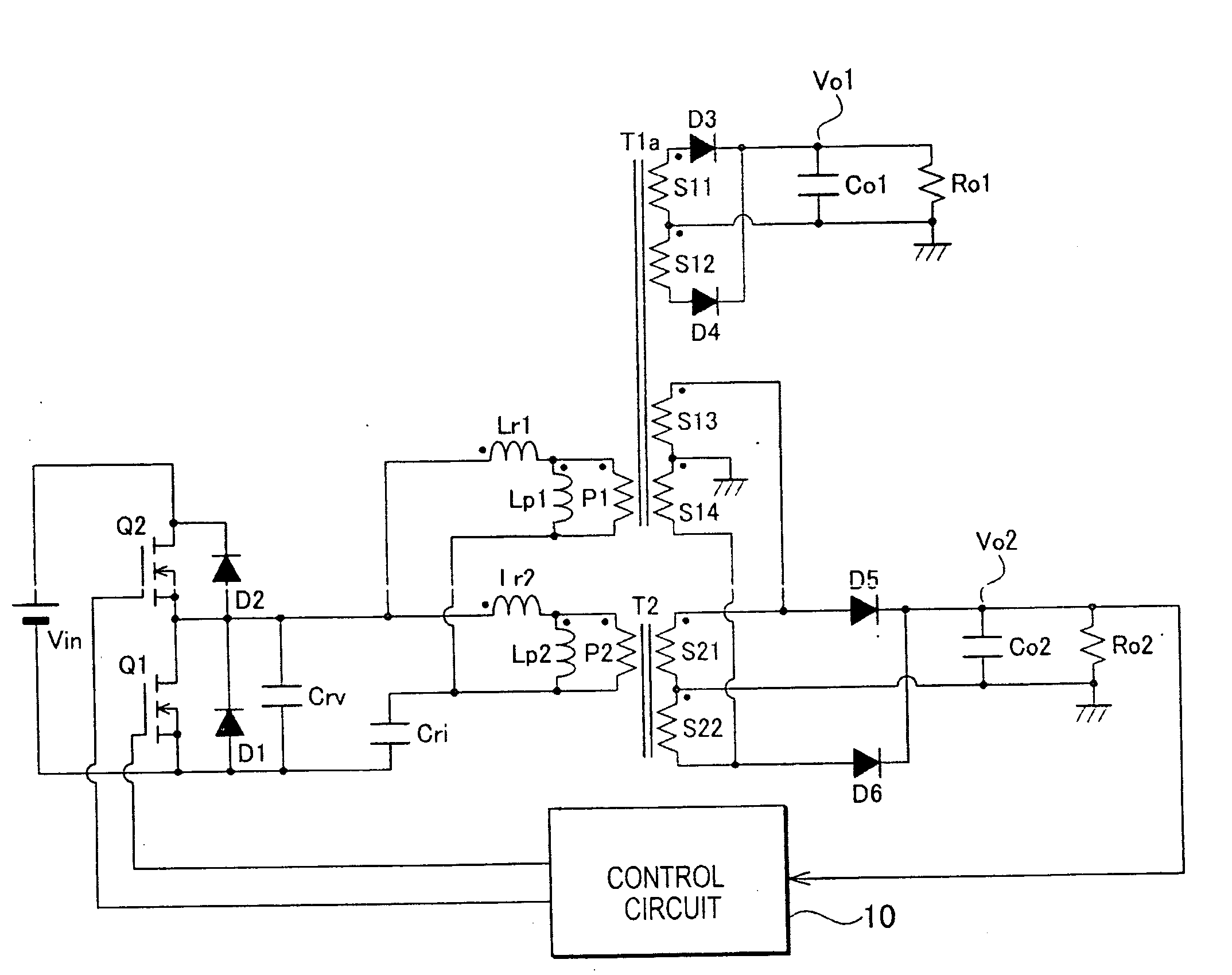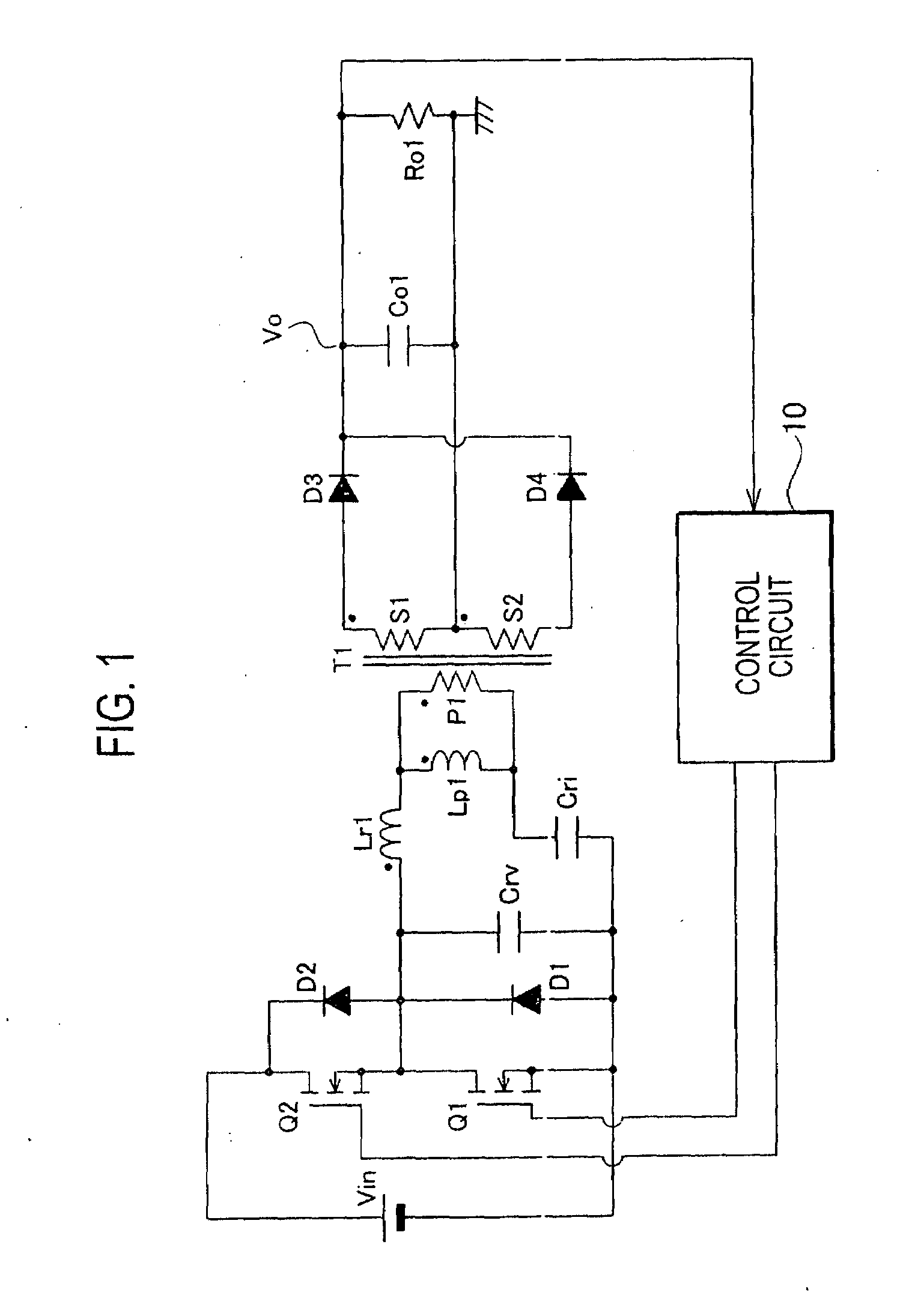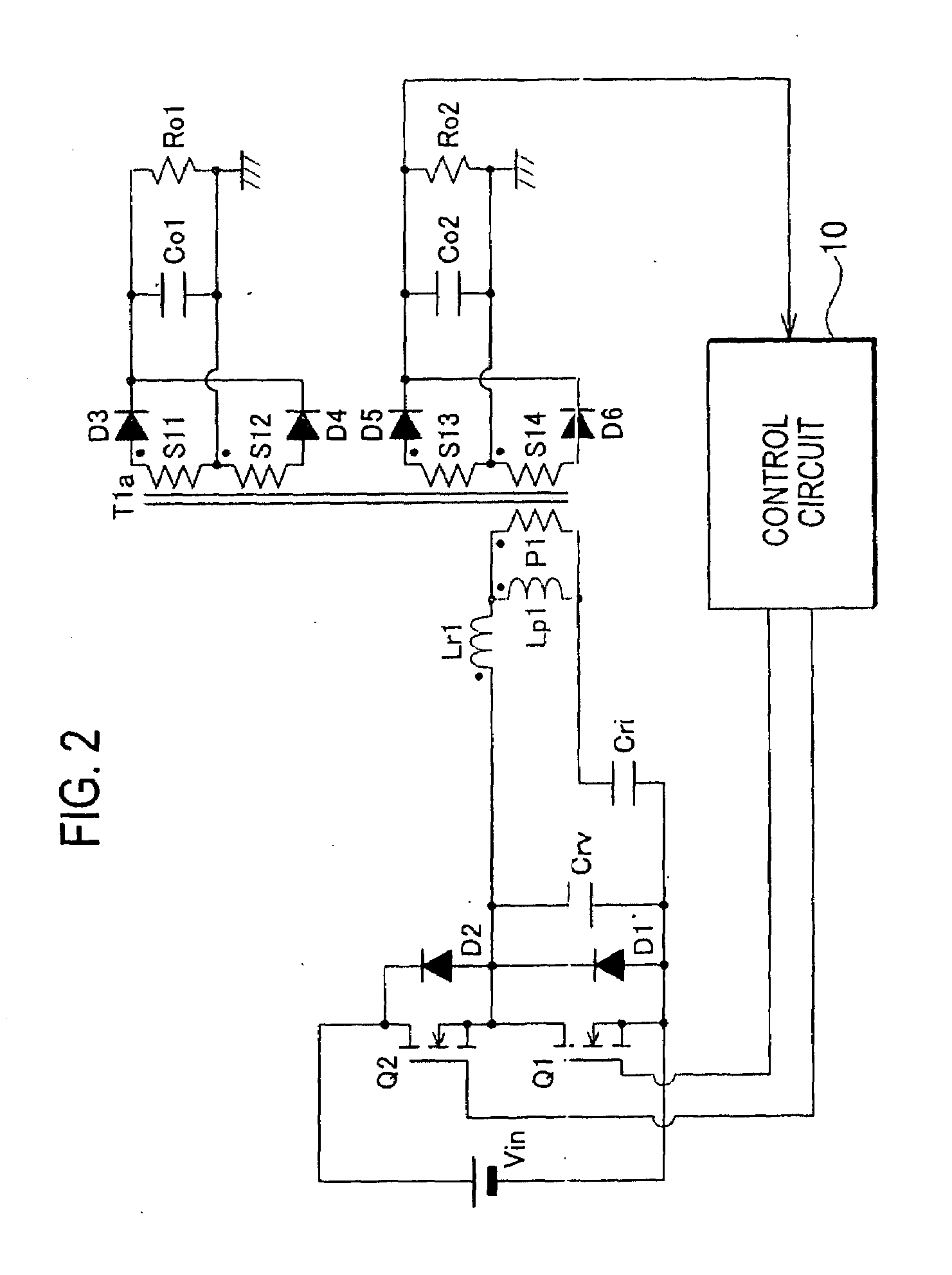DC conversion apparatus
a conversion apparatus and dc technology, applied in the direction of electric variable regulation, process and machine control, instruments, etc., can solve the problems of increasing copper loss, substantially equalizing core loss and winding loss, and increasing so as to reduce the number of turns, increase copper loss, and increase the resistance value of secondary winding.
- Summary
- Abstract
- Description
- Claims
- Application Information
AI Technical Summary
Benefits of technology
Problems solved by technology
Method used
Image
Examples
embodiment 1
[0049]FIG. 5 is a circuit diagram illustrating a DC conversion apparatus according to Embodiment 1 of the present invention. The DC conversion apparatus of Embodiment 1 illustrated in FIG. 5 has a half-bridge circuit like the DC conversion apparatus as illustrated in FIG. 1.
[0050]A transformer (first transformer) T1a at least has a primary winding P1, first secondary windings S11 and S12, and second secondary Bindings S13 and S14. The first secondary windings S11 and S12 and the second secondary windings S13 and S14 are connected in series.
[0051]A transformer (second transformer) 12 at least has a primary winding P2 and first secondary windings S21 and S22. The first secondary windings S21 and S22 are connected in series.
[0052]The primary winding P1 of the transformer T1a and a reactor (first reactor) Lr1 form a series circuit (first series circuit), and the primary winding P2 of the transformer f2 and a reactor (second reactor) Lr2 form a series circuit (second series circuit). The...
embodiment 2
[0079]FIG. 6 is a circuit diagram illustrating a DC conversion apparatus according to Embodiment 2 of the present invention. The present embodiment as illustrated in FIG. 6 employs a transformer t2a having secondary windings S23 and S24 in addition to the transformer T2 of the DC conversion apparatus of Embodiment 1 as illustrated in FIG. 5, to realize three outputs. The other parts of the configuration illustrated in FIG. 6 are the same as those of the DC conversion apparatus of Embodiment 1 as illustrated in FIG. 5, and therefore, the same parts are represented with the same reference marks.
[0080]A first end of the secondary winding S23 of the transformer T2a as depicted by a filled circle is connected to an anode of a diode D7. A second end of the secondary winding S23 of the transformer T2a and a first end (with a filled circle) of the secondary winding S24 of the transformer T2a are connected to a first end of a smoothing capacitor Co3. A second end of the secondary winding S24...
embodiment 3
[0082]FIG. 7 is a circuit diagram illustrating a DC conversion apparatus according to Embodiment 3 of the present invention. Compared with the DC conversion apparatus of Embodiment 1 illustrated in FIG. 5, the present embodiment as illustrated in FIG. 7 employs exclusive-use secondary windings S10 and S20 for coupling transformers T1b and T2b. The other parts of FIG. 7 are the same as those of the DC conversion apparatus of Embodiment 1 illustrated in FIG. 5, and therefore, the same parts are represented with the same reference marks.
[0083]The transformer T1b has the secondary winding (second secondary winding) S10 instead of the secondary windings S13 and S14 of the transformer T1a illustrated in FIG. 5. The transformer T2b has the secondary winding S20 (second secondary winding) in addition to the configuration of the transformer T2 illustrated in FIG. 5. A first end of the secondary winding S10 as depicted by a filled circle is connected to a first end (with a filled circle) of t...
PUM
 Login to View More
Login to View More Abstract
Description
Claims
Application Information
 Login to View More
Login to View More - R&D
- Intellectual Property
- Life Sciences
- Materials
- Tech Scout
- Unparalleled Data Quality
- Higher Quality Content
- 60% Fewer Hallucinations
Browse by: Latest US Patents, China's latest patents, Technical Efficacy Thesaurus, Application Domain, Technology Topic, Popular Technical Reports.
© 2025 PatSnap. All rights reserved.Legal|Privacy policy|Modern Slavery Act Transparency Statement|Sitemap|About US| Contact US: help@patsnap.com



